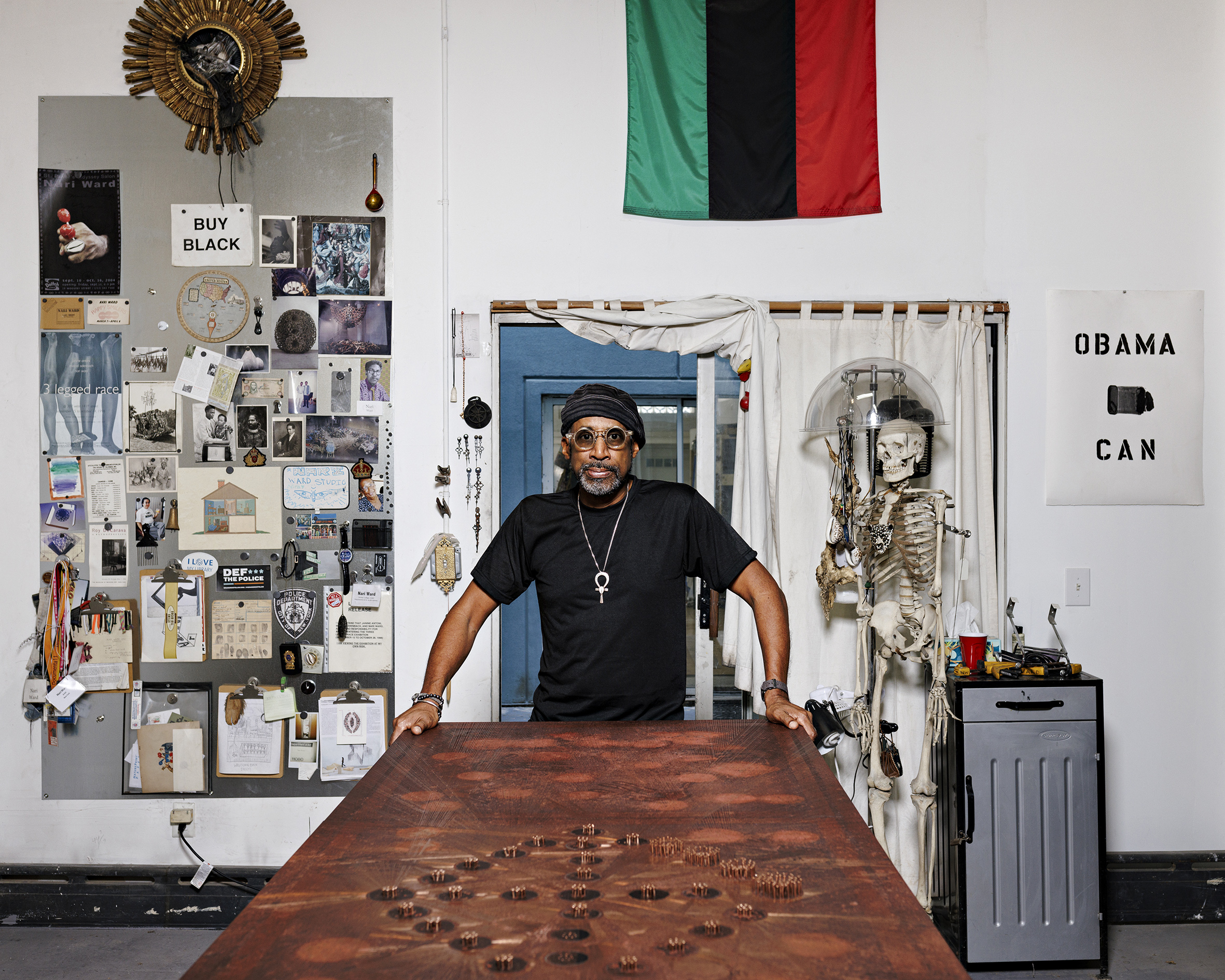Nari Ward: Ground Break
Pirelli HangarBicocca, Milan
From March 28th until July 28th, 2024
Celebrated as one of the most important contemporary American artists, Nari Ward creates layered works through interweaving and juxtapositions of found elements, alluding to various social and political aspects and addressing themes related to identity, racial issues, justice, and consumerism. Through his touching and provocative installations, videos, and sculptures, the artist infuses new meanings and genealogies into discarded objects found in unlikely places, such as abandoned buildings, streets, parking lots, revealing forgotten stories and geographies through complex and unprecedented narratives. In his thirty-year practice, he has created an intricate network of references and reflections between historical instances and current, local, and global themes, from the colonial history of Afro-Caribbean communities to that of slavery in the United States, from the gentrification of Harlem, a predominantly African-American and Latino neighborhood in New York, to the migrant crisis in the Mediterranean Sea. At the same time, he investigates spiritual and conceptual issues related to human relationships, social justice, the construction of collective identities, and communities through a shared historical memory. Central to Ward’s practice is his transformative and collaborative approach to art, to the extent that many of his works arise from a direct dialogue with the public.
I always felt that even this found object definition or classification really talks about the idea of collaborating. Because you’re reacting to something that you see and you are reacting to it as a material, but also, you’re reacting to the context that you’re finding it in and then you’re telling a story about it or you’re trying to give it a narrative that brings it to another kind of expectation or space for the viewer or listener.
With Ground Break, Ward creates a monumental choreography among works from the last thirty years and new productions, engaging in a dialogue between sculptures, videos, and installations. The exhibition, also featuring a program of performances in collaboration with other artists and musicians, prompts reflections on central issues of our time, such as social responsibility, inequality, marginalization, migrations, offering possible perspectives for transformation and change: the retrospective thoroughly explores the artist’s career, presenting over thirty works in the spaces of the Navate and Cubo of Pirelli HangarBicocca, from historical and seminal works never before re-staged to new productions created for the occasion. The exhibition path revolves around the large-scale installations that Ward created between 1996 and 2000 as sets for the performance Geography Trilogy by Ralph Lemon, one of the leading contemporary choreographers, a collaborative project developed over ten years, which initiates a reflection on the concepts of cultural conflict and mixing starting from the traumatic and enduring effects of colonialism. For the first time, these works – Geography Pallets (1997/2024), Geography Bedsprings (1997/2024), Geography Temperature Curtain (1997/2024), Geography Bottle Curtain (1997/2024) – are presented in an exhibition context, creating a new conceptual choreography with other works, space, and the bodies of the visitors themselves. The exhibition opens with Hunger Cradle (1996), a vast and intricate installation composed of a variety of suspended objects held together by a network of threads that physically and metaphorically connect the elements and that visitors are invited to traverse in order to encounter the other exhibited works. The work originated in a collaborative context, conceived for an exhibition that Nari Ward self-organized in 1996 together with Janine Antoni and Marcel Odenbach in an abandoned firehouse on 141st Street in Harlem, which would later become his studio.

Ward explores the desire for every object to be transformed to create a space for inquiry and to find an elsewhere through collaboration or dialogue between its history, sight, and relationship with the context. This aspect of his practice also reflects the approach of reconfiguring waste materials into consumer products, giving them a new function. Thus, in Carpet Angel (1992), carpets, plastic bags, bottles, and ropes are used to create an angelic figure suspended above a pile of improvised objects in a reflection on the sense of the sacred and everyday spirituality. While in Behold (1996) and Crusader (2005), Nari Ward transforms a stroller and a shopping cart into sculptural objects, redefining their social function and economic value.
For further information pirellihangarbicocca.org.










